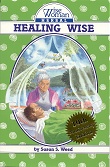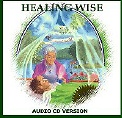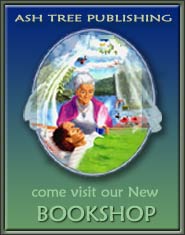Echinacea
Herbal Adventures with Susun S Weed
by Susun S. Weed
read other Herbal Adventures part 1, part 2 , part 3 , part 4
Let's dig down into the bottom of my first-aid kit and pull out the last two remedies. "Last but not least," my mom always says. And that is certainly true of these two. Like all the other remedies in my kit, I wouldn't want to leave home without them. 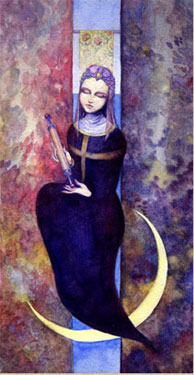 Echinacea and plantain are incredibly useful herbs that I want with me to remedy my ills, no matter where I am: east or west, north or south, aboard an airplane or astride a horse.
Echinacea and plantain are incredibly useful herbs that I want with me to remedy my ills, no matter where I am: east or west, north or south, aboard an airplane or astride a horse.
Almost everyone has heard of echinacea, the herbal "antibiotic," and a great many have taken it in one form or another. But when I first began to use it, thirty years ago, after reading about it in an old eclectic herbal, very few people had ever tried it. Back then, most herbalists relied on golden seal to counter infections.
But golden seal (Hydrastis canadensis) is extremely bitter, and golden seal is rare—and getting rarer. It did not appeal to me then; and it does not appeal to me now. In nearly forty years of using herbs, I have used golden seal only once—on flayed skin. I would never use it internally. If forced to choose between an antibiotic and golden seal, I would choose the former. Golden seal can do more harm to gut flora and the liver than most antibiotics.
But I don't want to take antibiotic drugs now, and I didn't then either. So I searched for anti-infective herbs. I found yarrow, now my favorite antiseptic. (See my previous column, and my next book, for more on this great herb.) I found garlic, which I use lavishly in cooking, believing it to be better at prevention than treatment. I found cayenne, which nearly killed me and which I loathe to this day. And finally I found echinacea, the purple cone flower.
Looking like a black-eyed Susan with purple-pink petals, purple cone flower's home territory was originally the Great Plains from Kansas to Montana and south into Oklahoma. But echinacea is an herb that loves people. So now it grows from coast to coast, and in every state in between, wherever gardeners who love beautiful and care-free plants live.
The easiest to grow is Echinacea purpurea. More difficult to cultivate, but the most medicinal, is Echinacea augustifolia (or angustifolia). But the roots of all the echinaceas, including the rare E. pallida and the fancy new cultivars, contain anti-infective alkaloids which are easily extracted into water and/or alcohol.
Don't expect instant gratification from growing echinacea. Like most perennials, echinacea roots don't really start concentrating alkaloids until after they have been growing for at least three years. While waiting for those roots to mature, some herbalists tincture the leaves and flowers. They do contain some effective alkaloids, but they are so inferior in action to yarrow or usnea that I never bother. A tincture of echinacea seeds is a little better, in my experience. But for maximum effect, I wait for the roots, or I make a tincture of dried roots.
Drying the roots of E. purpurea seems to destroy their effectiveness, so I use the dried roots of E. augustifolia when I make my tincture. I fill a quart jar about one-third full of dried, cut echinacea roots, then add enough 100 proof vodka to fill the jar completely. I label it with the date and ingredients and screw on a tight lid. I shake the jar daily for a few days, and then let it rest in a cool, dark place for as long as possible.
Unlike most tinctures, which are ready to use in six weeks, tincture of echinacea made from dried augustifolia roots gets stronger and stronger during its first year in the vodka.It gains no more after that year, but neither does it loose strength. So I buy a pound of dried E. augustifolia and make three or four quarts of tincture instead of just one.
(To tincture fresh purpurea roots: dig them after frost; wash and chop them; fill a jar to the top with the fresh roots, then fill the jar to the top with 100 proof vodka. Label. No need to shake. Ready in six weeks, but it does mature nicely.)
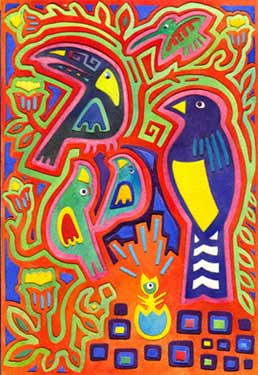 My dear friend and guardian angel Keyawis Kaplan calls echinacea "the big E for emergency." And so it is. Echinacea builds white blood cells rapidly, effectively countering a wide range of bacterial infections such as mastitis, UTIs, staph, strep, blood poisoning, sinusitis, bronchitis, tooth and gum infections, chronic and acute sore throat, and surgical as well as accidental wounds.
My dear friend and guardian angel Keyawis Kaplan calls echinacea "the big E for emergency." And so it is. Echinacea builds white blood cells rapidly, effectively countering a wide range of bacterial infections such as mastitis, UTIs, staph, strep, blood poisoning, sinusitis, bronchitis, tooth and gum infections, chronic and acute sore throat, and surgical as well as accidental wounds.
Combined with burdock, I have known echinacea to clear genital herpes, a viral infection. In general, however, echinacea is not much help against viral infections.
This brings up the question of echinacea’s usefulness in dealing with the viruses that cause colds and the flu. In my experience, since both colds and the flu are often accompanied—or immediately followed by—bacterial infections in the sinuses, throat, and lungs, echinacea can be a helpful ally to counter them. I do use it at the very first sign of a cold or the flu, along with immune-boosting herbs such as Astragalus cooked up in a soup.
When I use echinacea tincture, I use a lavish dose: 1 drop for every 2 pounds of body weight. A dropperful (which looks like half a dropperful) is about 25 drops of tincture. So I use a dropperful for children 25-50 pounds. Two dropperfuls for those weighing 50-100 pounds. Three dropperfuls for up to 150 pounds. Four for up to 200, and so on.
I take the full dose as often as every 1-2 hours in a crisis, or every 3-4 hours if I catch the infection at an early stage. And I expect to see relief within the first 24 hours. As I do, I space the doses further and further apart until all symptoms are gone. I don't count the days or the weeks that I use echinacea. If the infection warrants it—as when my goose "Sweetheart" was attacked by a toothed being (dog? coyote? fox?) and had his armpit ripped out—I will use large doses for months on end until all signs of infection (redness, pain and tenderness, heat or fever) are gone.
As is always the case, I never use echinacea in capsules. In my experience, dried herbs in capsules are the least effective physically, the most expensive financially, and the most dangerous way to take herbs: plenty of reasons to avoid them.
If you have concerns about alcohol, put your dose into hot liquid to dispel the alcohol, or brew the dried roots of E. augustifolia into an infusion by placing one ounce by weight of the root in a pint jar, filling it to the top with boiling water, capping tightly, and brewing for eight or more hours. I figure that one ounce of this infusion is equal in action to a dropperful of tincture. (You'll notice this is a very expensive way to use echinacea.)
I have so much to say about echinacea that I could go on and on. I've hardly started and already this column is at the end. And I didn't even talk to you about plantain. My green ally, plain plantain, says she is happy waiting until the next time we are together. Do join me then, for more green blessings.
Hi Susun,
I made the nettle infusion as directed, and it seemed rather strong and a little bitter. My stomach almost felt a little upset. Is that normal? Or did I prepare it wrong? Is it true you can't use nettle if it is flowering? I bought my nettle leaves from an organic health store that sells bulk herbs.
Myra
Dear Myra,
Thanks so much for helping everyone get the little details that make such a big difference in our herbal experiences. The only adverse reaction to ingestion of nettles known was caused by eating the flowering plant, so I avoid it.
You may indeed find the nettle infusion strong; it is. A nourishing herbal infusion of nettle is rich in minerals, which may taste bitter at first. It is loaded with vitamins and chlorophyll, which some find a little unsettling to the stomach at first. And it is an excellent source of protein, which gives a sensation of fullness with few or no calories.
How can you tame the taste of nettle? First, think of it as vegetable broth, not a tissane. Sweet is not the way to go with nettle; I avoid adding honey, stevia, sugar, or any other sweet stuff to my nettle brew. My favorite is nettle infusion over ice. Others prefer it warmed with a little miso or use it as a soup base.
Or you could try oatstraw infusion (one ounce dried oatstraw per quart boiling water) or linden blossom infusion (one-half ounce dried linden flowers per quart boiling water). They have the mildest taste and are good with honey, too. Rotating infusions is the way I do it: I have nettle one day, oatstraw the next, followed by comfrey, red clover, the linden and back to nettle.
Of course, you know your own body best, but I suspect that if you keep consuming nettle and the other nourishing infusions, using some of these tips, you'll soon grow to crave the taste. As you grow stronger, the taste of nettle may seem less strong.
Green blessings.
Susun

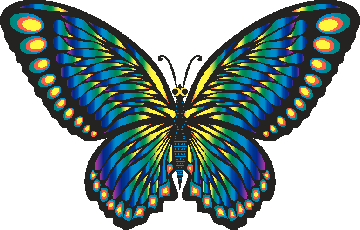 CORRESPONDENCE COURSES
CORRESPONDENCE COURSES
with Susun Weed
FOUR COURSES: Green Witch, Green Allies, Spirit & Practice of the Wise Woman Tradition, and a new course ABC of Herbal Medicine. All are multi-cultural and are suitable for beginning, intermediate, or advanced students. Most of my students take 13-15 months to complete one course, but there is no time limit.
 Green Allies explores herbal medicine through direct experiences with plants, plant spirits (fairies, devas), and plant medicines. For those who want to deepen, rather than broaden, their knowledge of plants: a year's worth of investigation and experimentation with one plant ally.
Green Allies explores herbal medicine through direct experiences with plants, plant spirits (fairies, devas), and plant medicines. For those who want to deepen, rather than broaden, their knowledge of plants: a year's worth of investigation and experimentation with one plant ally.
Learn more about Green Allies Correspondence Course...
 Green Witch focuses on personal and spiritual development. You'll create rituals, prepare an herbal first-aid kit, encounter your Goddess archetype, discover the magic of your menstrual/menopausal changes, and develop wise woman ways of living and healing.
Green Witch focuses on personal and spiritual development. You'll create rituals, prepare an herbal first-aid kit, encounter your Goddess archetype, discover the magic of your menstrual/menopausal changes, and develop wise woman ways of living and healing.
Learn more about Green Witch Correspondence Course ...
 Spirit & Practice of the Wise Woman Tradition focuses on understanding, internalizing, and using the Three Traditions of Healing (Wise Woman, Heroic, and Scientific) and the Six Steps of Healing. Health-care practitioners find this course exceptionally helpful, but anyone who cares for the health of others (even family members) will benefit.
Spirit & Practice of the Wise Woman Tradition focuses on understanding, internalizing, and using the Three Traditions of Healing (Wise Woman, Heroic, and Scientific) and the Six Steps of Healing. Health-care practitioners find this course exceptionally helpful, but anyone who cares for the health of others (even family members) will benefit.
Learn more about Spirit & Practice Correspondence Course ..
 ABC Herbal Medicine This is a special course for the aspiring herbalist who would like to have me "by your side" teaching you how to identify, harvest, and buy 52 healing herbs. I'll "watch over your shoulder" as you make nourishing herbal infusions, tinctures, vinegars, oils, honeys, poultices, soups, and beauty aids.
ABC Herbal Medicine This is a special course for the aspiring herbalist who would like to have me "by your side" teaching you how to identify, harvest, and buy 52 healing herbs. I'll "watch over your shoulder" as you make nourishing herbal infusions, tinctures, vinegars, oils, honeys, poultices, soups, and beauty aids.
Learn more about ABC of Herbal Medicine...

LOVE LETTERS
Hello Susun,
I was treated last year for breast cancer. I had no chemo but radiology. Am
not taking tamoxifen but am wondering about the herbs to take for
prevention. I am 68 yrs old and your book about breast health has been my
bible for many years. ….
Love, Jacky
read more...
|



 CORRESPONDENCE COURSES
CORRESPONDENCE COURSES 